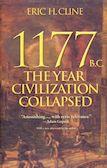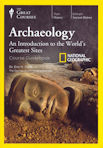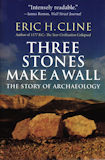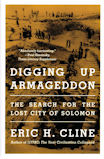In 1177 B.C., marauding groups known only as the “Sea Peoples” invaded Egypt.
The pharaoh’s army and navy managed to defeat them, but the victory so weakened Egypt
that it soon slid into decline, as did most of the surrounding civilizations.
After centuries of brilliance, the civilized world of the Bronze Age came to an abrupt and cataclysmic end.
Kingdoms fell like dominoes over the course of just a few decades.
No more Minoans or Mycenaeans. No more Trojans, Hittites, or Babylonians.
The thriving economy and cultures of the late second millennium B.C.
suddenly ceased to exist. How did it happen?
Eric Cline tells the gripping story of how the end was brought about by a series of connected calamities, ranging from invasion and revolt, to the cutting of international trade routes. He draws a sweeping panorama of the empires and peoples of the Late Bronze Age and shows that it was their very interdependence that hastened their dramatic collapse.



